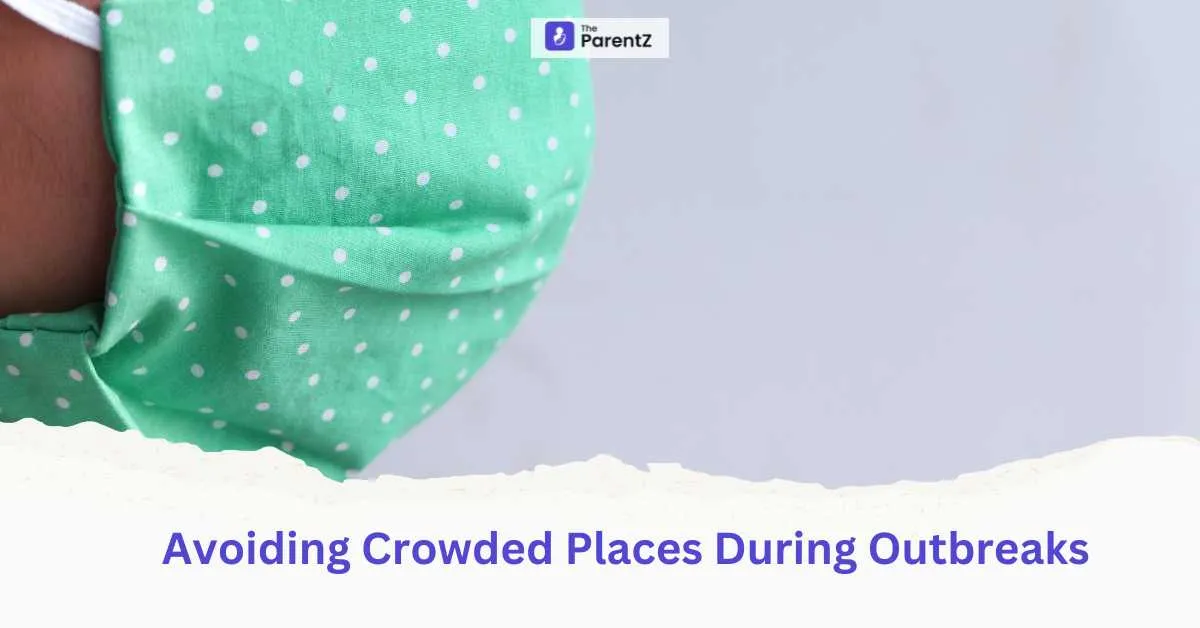Outbreaks of infectious diseases like the flu, COVID-19, or other respiratory illnesses underscore the critical importance of minimizing exposure to pathogens in crowded environments. Avoiding crowded places is a straightforward yet highly effective strategy to reduce the risk of infection for both individuals and the community. This article examines why this approach is essential during outbreaks, its numerous benefits, and practical ways to incorporate it into daily life.
Why Avoid Crowded Places During Outbreaks?
Crowded environments significantly increase the likelihood of disease transmission. These spaces often involve close physical proximity, high interaction levels, and shared air, creating ideal conditions for pathogens to spread rapidly.
High Transmission Rates
Respiratory infections, such as the flu or COVID-19, are primarily transmitted through droplets released when an infected person coughs, sneezes, or talks. In crowded places like public transport, markets, or events, these droplets can reach more people, amplifying the risk of exposure.
Asymptomatic Spread
One of the major challenges in controlling outbreaks is that infected individuals may not show symptoms immediately but can still transmit the virus. Crowded settings make it almost impossible to identify and avoid such carriers, increasing the risk of unnoticed spread.
Limited Ventilation
Indoor crowded areas often suffer from poor ventilation, allowing airborne viruses to linger for longer periods. This significantly raises the risk of inhaling infectious particles, especially in enclosed spaces with high occupancy.
Benefits of Avoiding Crowds During Outbreaks
Avoiding crowded areas offers multiple benefits for personal and public health:
- Reduced Exposure: By minimizing close contact with potentially infected individuals, you lower the chances of contracting the illness.
- Protecting Vulnerable Populations: Steering clear of crowds reduces the spread of infection to high-risk groups, such as the elderly, pregnant women, and individuals with chronic conditions or weakened immune systems.
- Community Control: Fewer transmissions mean fewer cases, helping to ease the strain on healthcare systems and limiting the overall impact of the outbreak.
Practical Strategies for Avoiding Crowded Places
Reducing exposure to crowds requires proactive adjustments to daily routines and activities. Here are some practical approaches:
Choose Off-Peak Hours
Plan visits to essential places like grocery stores or banks during non-peak hours. Early mornings or late evenings typically have fewer crowds, reducing your risk of exposure.
Work from Home
Whenever possible, leverage remote work options to avoid crowded office spaces and commutes. Use virtual meeting tools to stay connected and maintain productivity without compromising safety.
Opt for Delivery Services
Take advantage of online shopping platforms for groceries, medications, and other necessities. Contactless delivery further minimizes direct interactions, adding an extra layer of protection.
Avoid Mass Gatherings
Postpone attending large events like concerts, conferences, or festivals. For essential gatherings, prioritize outdoor settings where physical distancing can be maintained.
Plan Outdoor Activities
Choose outdoor venues for recreation or exercise, such as parks, instead of crowded indoor gyms or malls. Even in outdoor settings, maintain physical distance to minimize risk.
Adjusting Daily Routines to Avoid Crowds
Small adjustments to everyday habits can significantly reduce exposure to crowded places. For example, consider alternatives to public transport by walking or biking when possible. If dining out, opt for restaurants with outdoor seating or reduced indoor capacity. When running errands, consolidate tasks into a single trip to limit exposure and reduce time spent in public spaces.
Supporting Others While Avoiding Crowds
Even while avoiding crowded places, staying socially connected and supporting vulnerable individuals remains important. Virtual engagement and responsible community participation can ensure collective well-being.
Community Engagement
Contribute to your community through virtual volunteering, such as organizing online resources or support groups. These efforts allow you to stay connected and make a positive impact while maintaining safe practices.
Supporting Vulnerable Neighbors
Offer assistance to elderly or immunocompromised neighbors by running errands or delivering essential supplies. This thoughtful action can help protect those most at risk while fostering community solidarity.
Advocating for Public Safety
Encouraging public safety measures is another way to contribute during outbreaks. Advocate for policies like staggered schedules, virtual services, and enhanced ventilation in workplaces, schools, and community centers. Sharing accurate health information about the importance of avoiding crowded spaces can also raise awareness and promote responsible behavior.
Complementary Health Practices
Avoiding crowds is only one aspect of minimizing risk. Complement this strategy with other preventive measures to maximize protection:
- Hand Hygiene: Wash your hands thoroughly with soap for at least 20 seconds or use an alcohol-based hand sanitizer.
- Mask Wearing: Wear a properly fitted mask in public spaces, especially where physical distancing is difficult.
- Vaccinations: Stay current with flu shots, COVID-19 boosters, and other recommended vaccines to reduce the risk of severe illness.
- Healthy Lifestyle: Support your immune system with balanced nutrition, regular exercise, and adequate sleep.
Balancing Safety with Daily Needs
In some situations, avoiding crowds may not be entirely feasible. For unavoidable instances, take precautions to minimize risk:
- Wear Protective Gear: Masks and gloves can provide added protection in crowded environments.
- Limit Duration: Spend as little time as possible in such spaces.
- Practice Physical Distancing: Maintain at least six feet of distance from others whenever possible.
Long-Term Benefits of Avoiding Crowded Places
The practice of avoiding crowded places during outbreaks has enduring advantages. It fosters greater health awareness, encouraging individuals to assess the safety of their environments regularly. Community resilience is strengthened as reduced transmission rates lead to shorter, less severe outbreaks. Additionally, increased adoption of virtual services and remote work improves accessibility and convenience for the long term.
Conclusion: Prioritizing Health in Challenging Times
Avoiding crowded places during outbreaks is a vital part of protecting yourself, your family, and your community. Combined with other preventive measures, this simple practice can significantly curb the spread of infectious diseases. By adopting mindful approaches to daily activities and encouraging collective responsibility, you contribute to a healthier, more resilient community. Every effort, no matter how small, plays a crucial role in safeguarding public health during challenging times.








Be the first one to comment on this story.